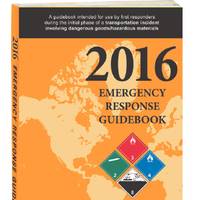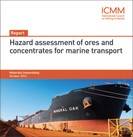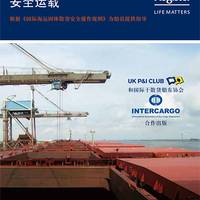Transporting Hazardous Substances by Ship
Transporting hazardous and noxious substances (HNS) by sea is a vital trade. Chemicals, LPG, LNG and other products are important to many manufacturing and energy processes and International Maritime Organization (IMO) regulations ensure their safe transport. However, when incidents do happen, IMO’s HNS Convention helps to ensure that those who have suffered damage have access to a comprehensive and international liability and compensation regime. To explain this treaty and why it is needed, IMO’s Jan De Boer is participating at the LNG Ship/Shore Interface Conference in London (16-17 November). His keynote speech covered the impacts associated with HNS incidents…
Norway First to Ratify Hazardous Cargo Treaty

Norway has become the first country to become a contracting state to a key compensation treaty covering the transport of hazardous and noxious substances (HNS) by ship. The International Convention on Liability and Compensation for Damage in Connection with the Carriage of Hazardous and Noxious Substances by Sea, 2010 (2010 HNS Convention), when in force, will provide a regime of liability and compensation for damage caused by HNS cargoes transported by sea, complementing existing regimes already in force for the transport of oil as cargo…
States Urged to Ratify Compensation Regime for Hazardous and Noxious Cargoes
The International Maritime Organization (IMO), together with the International Oil Pollution Compensation Funds (IOPC Funds) and the International Tanker Owners Pollution Federation (ITOPF), is urging its Member States to ratify and implement a key compensation treaty covering the transport of hazardous and noxious substances (HNS) by ship. The International Convention on Liability and compensation for Damage in Connection with the Carriage of Hazardous and Noxious substances by Sea, 2010 (2010 HNS Convention), when in force, will provide a regime of liability and compensation for damage caused by HNS cargoes transported by sea, complementing existing regimes already in force for the transport of oil as cargo…
Emergency Response Guidebook Features DOT/PHMSA Updates

Labelmaster offers the 2016 edition of the Emergency Response Guidebook (ERG) – a must have for anyone who handles or transports dangerous goods (hazardous materials). The ERG is a go-to manual to help responders quickly identify the specific or generic classification of the hazardous material or materials that may be involved in an incident, which helps protect themselves and the general public during the initial response phase. The ERG is published every four years by the U.S.
New Guidance Assists Mining and Metals Companies

ICMM’s latest guidance document will assist mining and metals companies in meeting the demands of new marine transport regulations. In this guidance ICMM sets out the approach that leading mining and metals commodity associations have developed in collaboration with scientific experts from research institutes around the world. Growing demand for metals and greater societal awareness of their potential chemical hazards means there is a need to demonstrate they are produced, transported and used safely.
Solid Bulk Cargos Safety Guide Now in Chinese

International Maritime Solid Bulk Cargos (IMSBC) Code pocket checklist will be available at Marintec 2013 next week. Lloyd’s Register, UK P&I Club, and Intercargo produced a pocket guide and checklist earlier this year for ships’ officers and agents who arrange cargos for loading. When bulk cargos shift, liquefy, catch fire or explode due to poor loading procedures, the consequences can be critical – ships could capsize, lose stability or sustain severe structural damage. Now the pocket checklist…
UK P&I Club Pocket Guide for Safe Carriage of Solid Bulk Cargoes
When bulk cargoes shift, liquefy, catch fire or explode as a consequence of poor loading procedures, the consequences can be massive. Ships may capsize, lose stability or sustain severe structural damage. Such happenings enhance the risks and occurrence of death, injury, insurance claims, operational delay and considerable expense. This prompted the UK P&I Club, Lloyd’s Register and Intercargo to produce a pocket guide and checklist for ships’ officers and agents who arrange cargoes for loading. Carrying solid bulk cargoes safely: Guidance for crews on the International Maritime Solid Bulk Cargoes Code outlines the precautions to be taken before accepting solid bulk cargoes for shipment…
Big Ideas Sometimes Come in Small Packages
Hyde Marine’s chemical-free, IMO Type Approved ballast water treatment solution packs performance in a smaller footprint. That’s good news for small vessel operators who may soon find themselves impacted by a problem that previously was thought to be a “bluewater” issue. The notion that ballast water treatment and invasive species are both strictly the domain of big, bluewater liners coming from the Far East and other exotic locales quickly went out the porthole last November when the Environmental Protection Agency (EPA) issued its long-awaited, updated draft Vessel General Permit (VGP) rule. The new rules potentially bring regulations to bear on vessels as small as 79 feet LOA and others, depending on service and routing.
Smiths Detection Installation at Port of Providence
Smiths Detection announced the award of a contract for its FirstView early warning chemical threat detection and video management system to be installed at the Port of Providence, R.I. Funded through a competitive Department of Homeland Security grant, the system will alert authorities to chemical hazards in the port area and provide real-time video and sensor data to first responders and emergency personnel. It combines Smiths Detection’s chemical detection capabilities (Centurion II) and FirstView video and sensor management software with Raytheon’s Athena command and control system to monitor traffic in Narragansett Bay. Using radar…
Coast Guard Offers Resources on Hazardous Materials
The United States Coast Guard has published a free resource CD-ROM that brings comprehensive chemical information to the fingertips of fire and safety service personnel responding to a hazardous materials incident. Users can search the database by a substance's color, odor, and physical appearance and use the data to plan for a safe and effective response. Chemicals are rated according to health risk, flammability, and reactivity, among other factors, using data from several sources. The CD-ROM, known as CHRIS+, contains several databases of chemical, physical, thermodynamic, toxicological, and fire properties. Weapons of Mass Destruction (WMD) First Responder's Guide, the Coast Guard's advice for responders to WMD incidents.
Legal Briefs
Avondale Industries, Inc. has agreed to pay $357,750 in penalties for safety and health violations at its shipyard in Avondale, La., and implement a revised safety and health program as part of a settlement agreement announced by the Occupational Safety and Health Administration (OSHA). "We are pleased Avondale has agreed to resolve this matter," said Secretary of Labor Alexis M. Herman. "Avondale's new management has shown they are serious about eliminating safety hazards. OSHA originally inspected the shipyard in October 1998 following union complaints of possible imminent danger from falls, and other health issues. Based on that inspection, OSHA issued 60 citations against the shipbuilder last April and proposed fines of $537,000.





